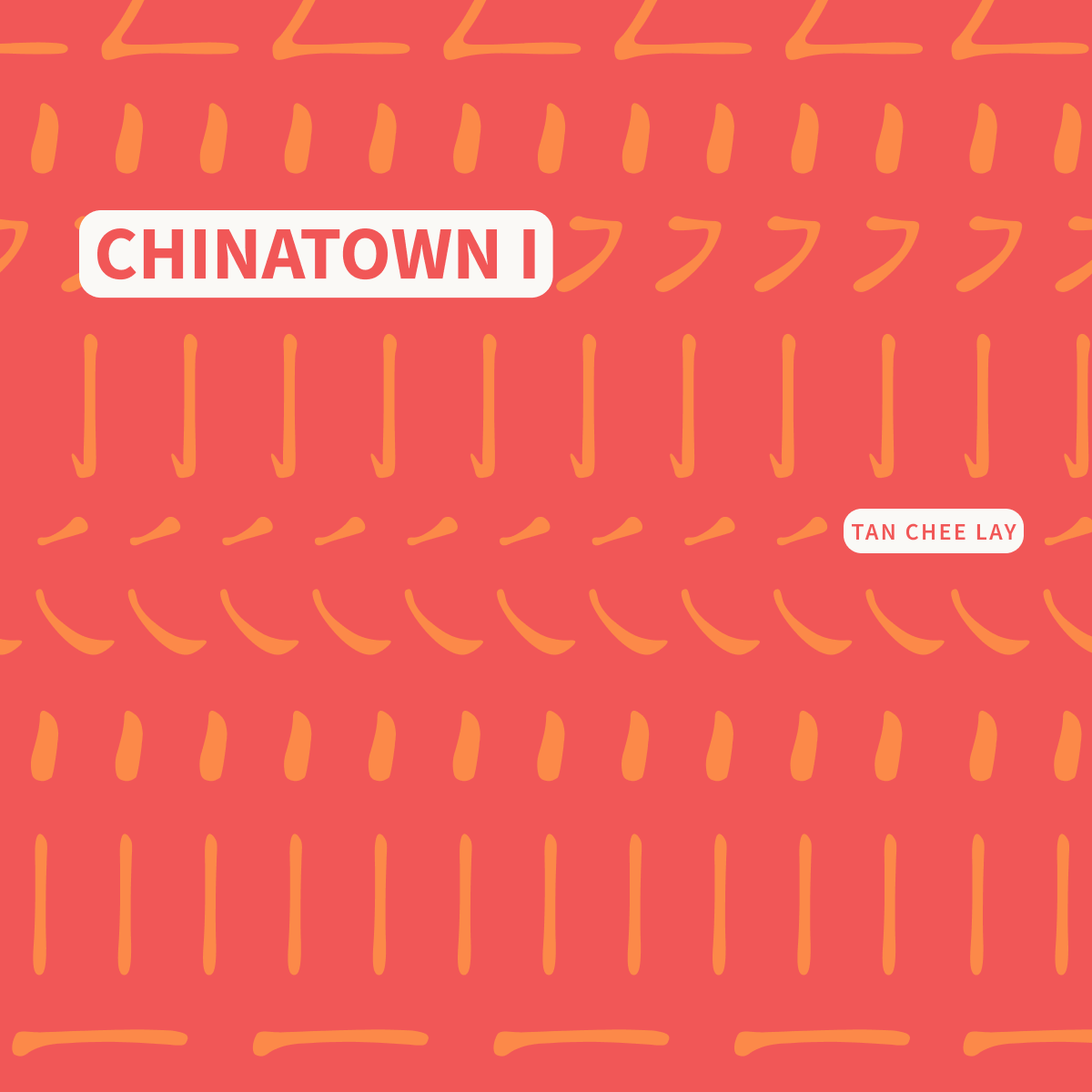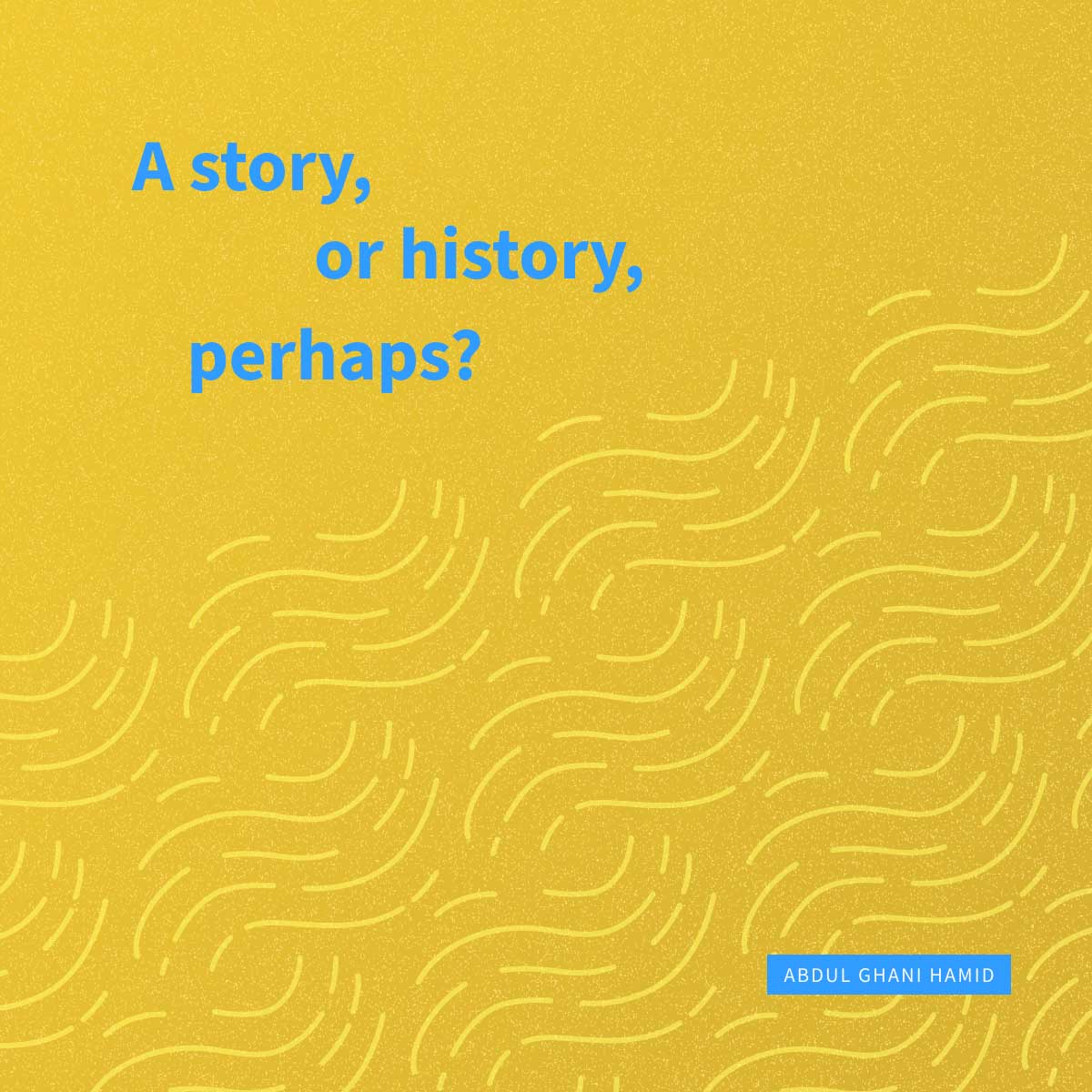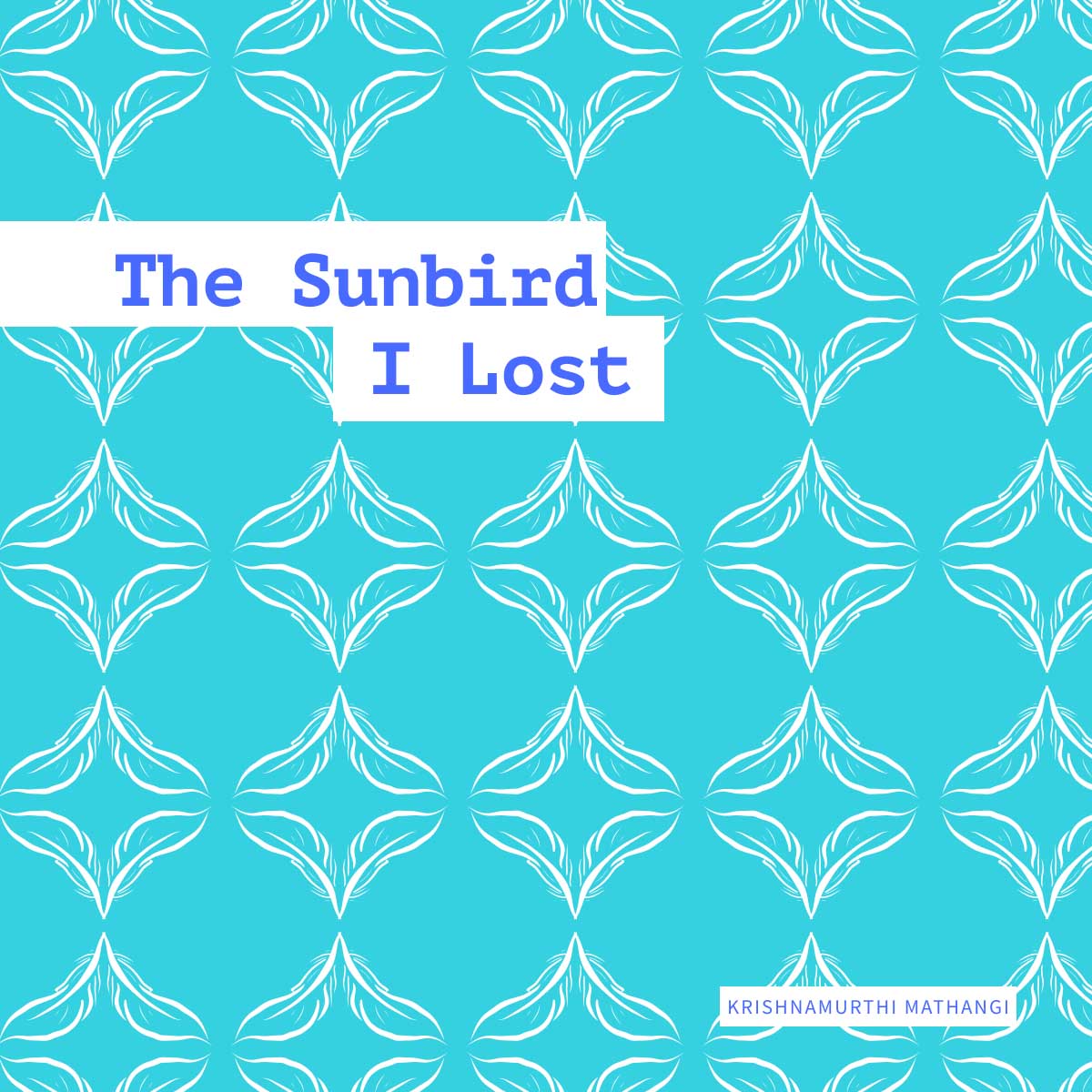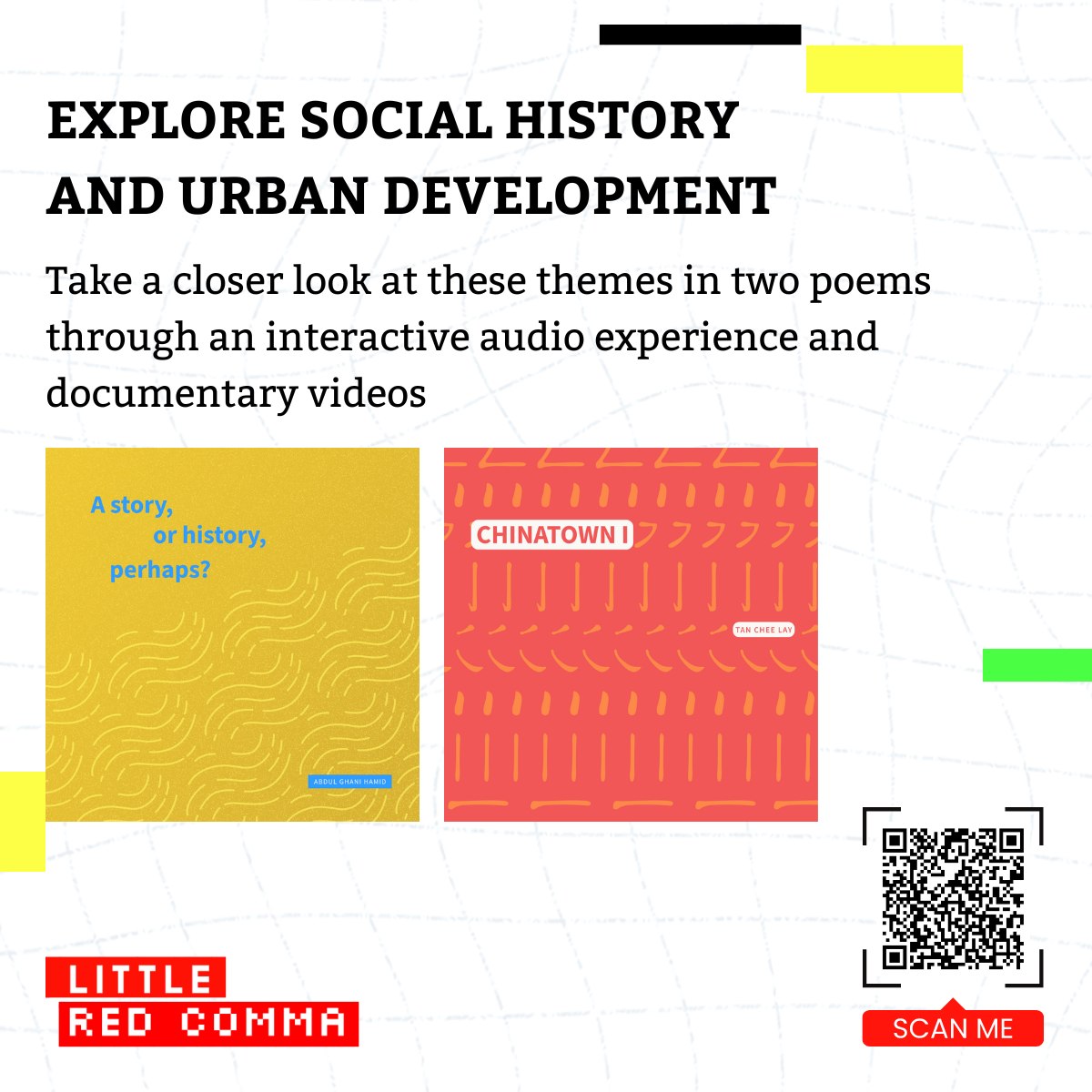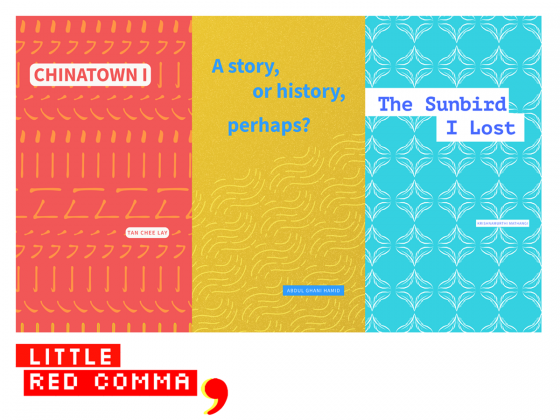
little red comma – Behind the scenes (Part 2): Creating your own spoken word track
Written by: samantha
In part one, we discussed some of the different concepts and formats used in our literary adaptations for the second edition of little red comma, which was released between August 2022 and February 2023.
This part looks at three poems originally written in mother tongue languages: “Chinatown I” by Tan Chee Lay, “A Story, or History, Perhaps?” by Abdul Ghani Hamid, and “The Sunbird I Lost” by Krishnamurthy Mathangi.
To foreground the aural qualities of the languages, we decided on an audio-led concept that allowed users to create their own spoken word track in an interactive, ‘hands-on’ and custom digital reading experience.
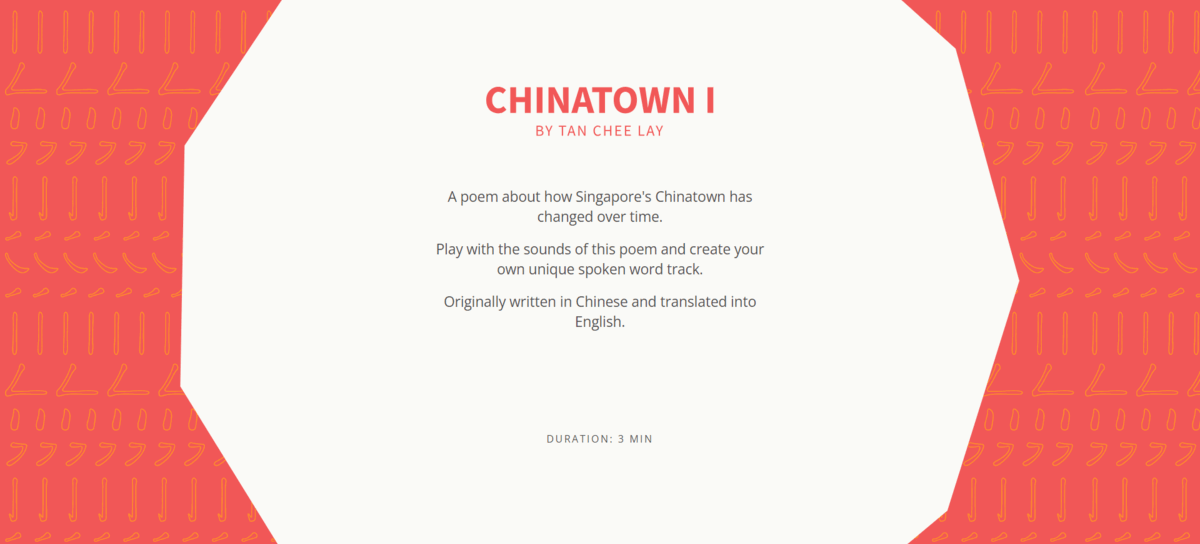
Engaging with literature in mother tongue
According to a 2021 report by Singapore’s National Institute of Education on the reading habits of bilingual children here, children enjoyed and were more at ease reading books in English than their mother tongue.
Since the little red comma series features local poets and authors, the selection of literary works included writing in one of each major mother tongue language in Singapore – Chinese, Malay, and Tamil.
Using sound effects and voiceovers
The poems and short stories selected for this edition of little red comma centre on a common theme of how identity and belonging is indelibly associated with physical landmarks. All three mother tongue language poems, for instance, either focus on or mention different locations in Singapore such as Chinatown, Siglap and Katong in the eastern part of Singapore, as well as Whampoa.
However, as evocative as images and maps can be, we wanted to try something different – using sound and voice instead to engage people. With young readers generally less proficient in non-English languages and thus less likely to read or listen to works originally written in these, our team felt there was an opportunity to emphasise the sonic aspects of the languages and their beauty.
As the poems are also highly descriptive and emotive, music pieces of varying tempos from fast to slow were included to match the mood of each poem. Sound effects drawn from the text were also used, such as the sounds of Chinese dialects and street market noises from “Chinatown I”.
Listen to a sample soundtrack created of “Chinatown I” by Tan Chee Lay
Creating your own unique soundtrack
When entering the microsite, you are first given two options: to either listen to the poem read out in its original language, or record your own voiceover.
Listen to a sample soundtrack created of “The Sunbird I Lost” by Krishnamurthy Mathangi
The next step invites further engagement with the poem by playing around with sound effects inspired by words and phrases in the text. As the voiceover plays, you get to tap on an interactive disc with various music and sound effects, to play these at different points in the poem as it is narrated.
Once the poetry reading has finished playing, your custom soundtrack can then be downloaded and shared with friends! And if you don’t like how it sounds – simply restart the experience and continue playing with the site to record different sound compositions to your liking.
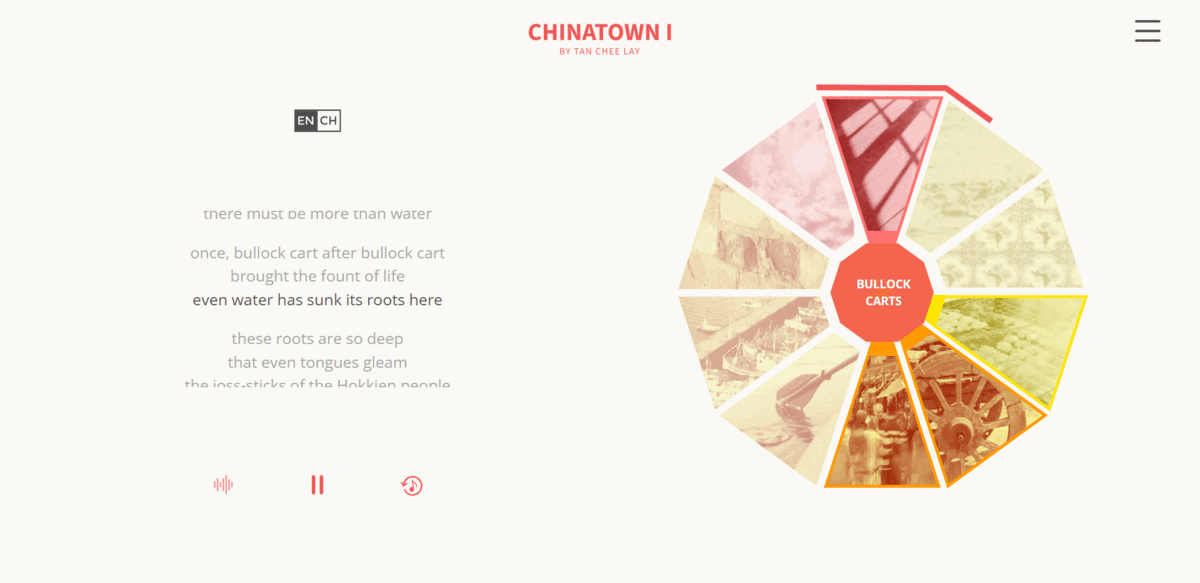
Here’s another sample soundtrack created of “A Story, or History, Perhaps?” by Abdul Ghani Hamid
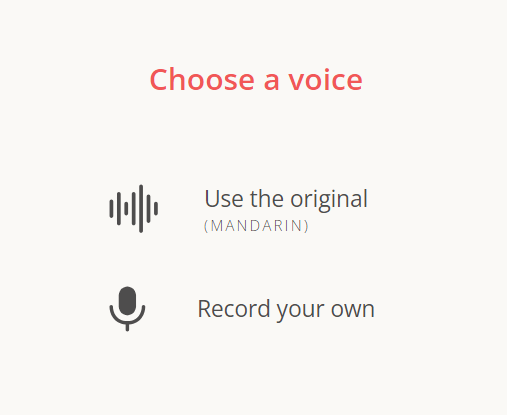
To invite closer reading of the poetry, we added another feature on the microsite too: an option for users to record their own reading of the poem. This challenges people to practice reading poems in their own mother tongue, to create a customised spoken word track that is truly their own.
Create your own spoken word tracks
Chinatown I
by Tan Chee Lay
Originally written in Chinese and translated into English by Teng Qian Xi, “Chinatown I” is a poem about the polyphony of Chinese dialects that once filled Singapore’s Chinatown.
A Story, or History, Perhaps?
by Abdul Ghani Hamid
Originally in Malay and translated into English by Annaliza Bakri, “A Story, or History, Perhaps?” (2008) is a melancholic rumination on sweeping transformations of the land and intergenerational change in the eastern part of Singapore.
The Sunbird I Lost
by Krishnamurthi Mathangi
Originally in Tamil and translated into English by the author, this poem reflects on both everyday and life-changing encounters in a neighbourhood.
Educator’s Guides
For educators looking for ideas on how you can use literary works in the classroom, Esplanade Offstage offers the following educator’s guides:
|
|
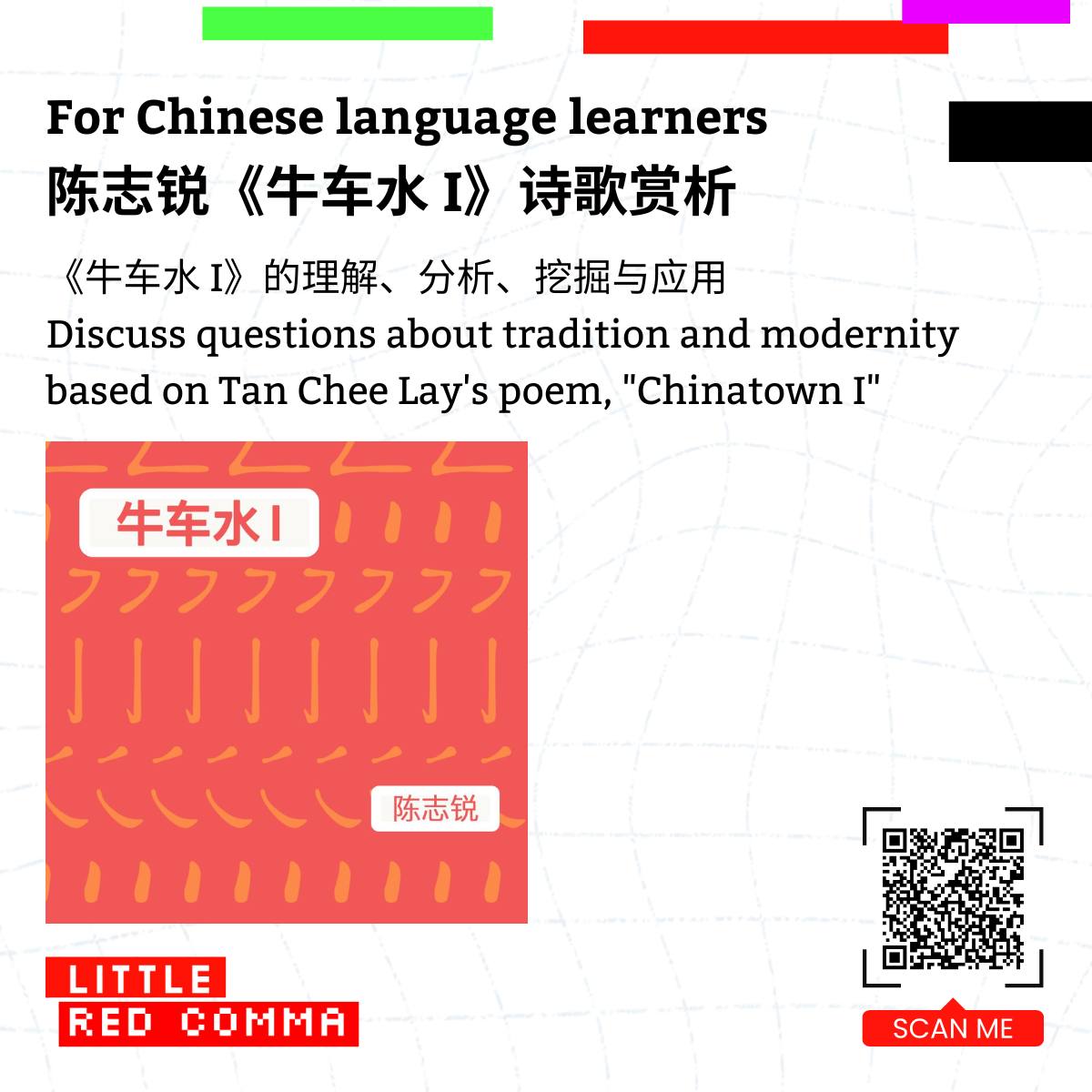 |
|
For English literature and language arts learners– A Story, or History, Perhaps? by Abdul Ghani |
For Chinese language learners
|
About little red comma
little red comma fuses Singapore literature with digital media, through web adaptations of diverse works by established and emerging homegrown writers as well as literary pioneers.
The second edition of the series featured a total of seven works, with one adaptation launched each month from August 2022 to February 2023, featuring original soundscapes, audio readings and illustrations by local creatives.
Commissioned by Esplanade Offstage, little red comma is produced by digital storytelling studio Tusitala and supported by the National Arts Council.

